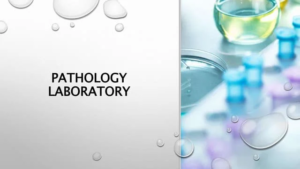Imagine a condition that silently creeps upon you, robbing you of your vision without any noticeable symptoms until it’s too late. This is the grim reality of glaucoma, a sight-threatening eye disease that affects millions of people worldwide. As an ophthalmologist, it is my mission to raise awareness about this insidious condition and the importance of early detection and comprehensive glaucoma work-up to preserve precious vision. In this blog, we will delve into the complexities of glaucoma, its underlying causes, diagnostic techniques, and the latest advancements in its management, with the aim of empowering patients and eye care professionals alike in the battle against the stealthy vision thief.
What is Glaucoma?
Glaucoma is a group of eye diseases that damage the optic nerve, leading to gradual and irreversible vision loss. The optic nerve is responsible for transmitting visual information from the eye to the brain, allowing us to see the world around us. As glaucoma progresses, it creates blind spots in the visual field, often starting at the periphery and eventually affecting central vision. The most common type of glaucoma is primary open-angle glaucoma, where the drainage angle of the eye becomes less efficient over time, causing an increase in intraocular pressure (IOP) and damaging the optic nerve.
The Silent Thief of Sight:
One of the most concerning aspects of glaucoma is its “silent” nature. In the early stages, patients typically do not experience any noticeable symptoms or pain. This lack of obvious warning signs often leads to delayed diagnosis, allowing the disease to advance undetected. By the time symptoms become apparent or vision loss is noticeable, significant damage to the optic nerve has already occurred. Regular comprehensive eye examinations, especially for individuals over the age of 40, become crucial in detecting glaucoma early and preventing irreversible vision loss.
The Role of Intraocular Pressure (IOP) in Glaucoma:
Intraocular pressure, the pressure within the eye, plays a central role in glaucoma development and progression. Elevated IOP puts increased stress on the optic nerve, causing damage over time. While elevated IOP is a major risk factor for glaucoma, not all individuals with high IOP will develop the disease, and conversely, some glaucoma cases may have normal IOP. This highlights the complexity of glaucoma and the importance of considering other factors during the diagnostic process.
The Importance of Comprehensive Glaucoma Work-Up:
A comprehensive glaucoma work-up is a multifaceted approach to evaluate and diagnose the disease accurately. It involves a series of tests and examinations, including tonometry (measuring IOP), gonioscopy (assessing the drainage angle), pachymetry (measuring corneal thickness), visual field testing, and optic nerve evaluation through imaging techniques like optical coherence tomography (OCT) and scanning laser polarimetry (SLP). Integrating these tests allows eye care professionals to assess both the structural and functional aspects of the eye, providing a more complete picture of the disease.
Gonioscopy: Unlocking the Angle of the Eye:
Gonioscopy is a vital tool in glaucoma work-up, especially in diagnosing angle-closure glaucoma. This non-invasive procedure involves examining the drainage angle of the eye to assess its openness or closure. Angle-closure glaucoma can be sudden and severe, leading to a rapid decline in vision. Early detection through gonioscopy is crucial for timely intervention and preventing irreversible damage.
Evaluating Structural Changes: The Role of OCT and SLP:
Optical coherence tomography (OCT) and scanning laser polarimetry (SLP) have revolutionized the evaluation of the optic nerve and retinal nerve fiber layer. These advanced imaging techniques provide high-resolution cross-sectional images, enabling eye care professionals to detect even subtle changes in the optic nerve head and identify early signs of glaucoma. The integration of OCT and SLP findings with other diagnostic tests enhances the accuracy of glaucoma diagnosis and facilitates more targeted treatment plans.
Assessing Functional Vision Loss: Visual Field Testing:
Visual field testing (perimetry) is essential in monitoring glaucoma progression and evaluating functional vision loss. By mapping the patient’s field of vision, eye care professionals can identify patterns of vision loss indicative of glaucoma. Regular visual field testing allows for timely adjustments to treatment plans and helps gauge the effectiveness of ongoing management strategies.
Personalized Glaucoma Management: Treatment Options and Follow-Up Strategies:
The management of glaucoma is not one-size-fits-all. Each patient’s condition is unique, and personalized treatment plans are essential for preserving vision and ensuring the best possible outcome. Treatment options may include eye drops, laser therapy (such as selective laser trabeculoplasty), and various surgical procedures (like trabeculectomy or drainage implants). Regular follow-up examinations and monitoring are crucial to adapting treatment approaches based on disease progression and patient response to therapy.
Glaucoma remains a significant public health concern, and its impact on vision underscores the importance of early detection and comprehensive glaucoma work-up. As an eye care professional, my goal is to educate patients about glaucoma, encourage regular eye examinations, and advocate for continued research to develop more effective treatments. By raising awareness and promoting proactive eye care, we can collectively work towards reducing the burden of glaucoma and preserving the gift of sight for generations to come. Remember, early detection is the key to outsmarting the stealthy vision thief called glaucoma.
Looking for the best glaucoma specialist in Baner? Dr. Kasture is a renowned ophthalmologist offering expert glaucoma care and surgery services in Balewadi. With a comprehensive approach to glaucoma work-up, including advanced diagnostic techniques like optical coherence tomography (OCT) and scanning laser polarimetry (SLP), Dr. Kasture ensures accurate diagnosis and personalized treatment plans for each patient. Whether you need routine glaucoma management or advanced surgical interventions, trust Dr. Kasture’s expertise to safeguard your vision. Schedule an appointment today and take the first step towards preserving your precious eyesight.




